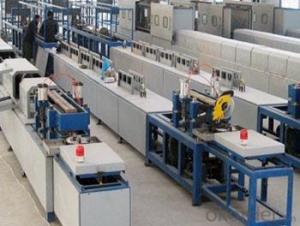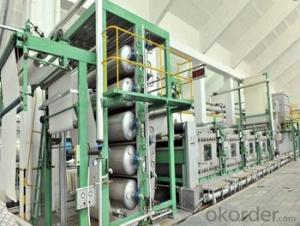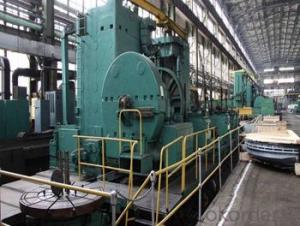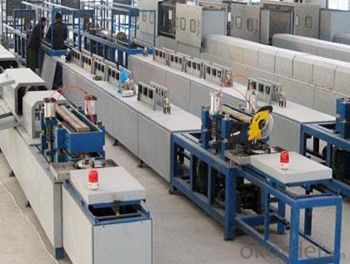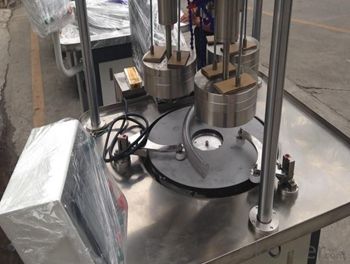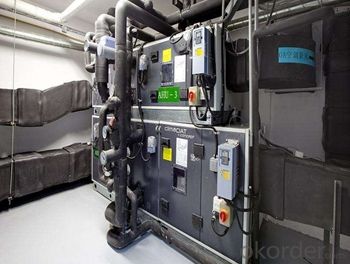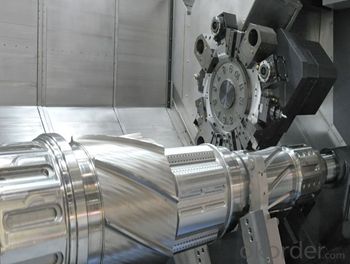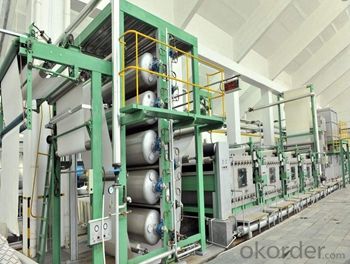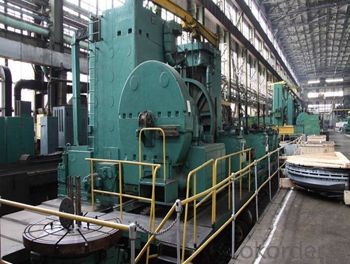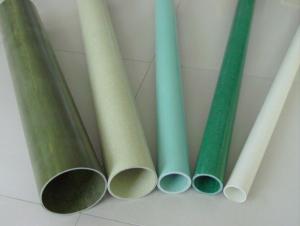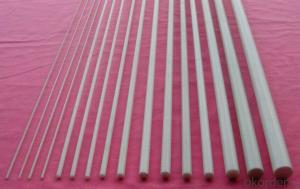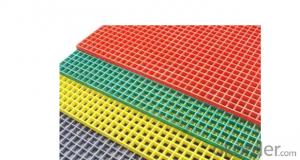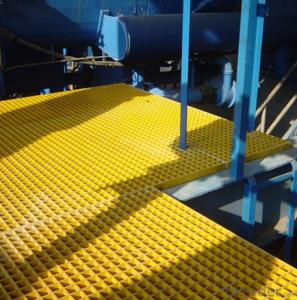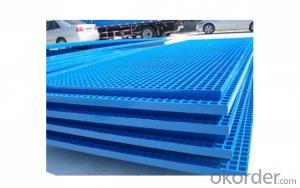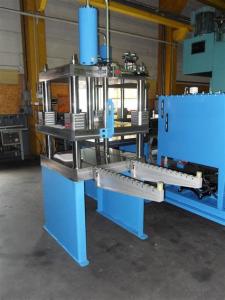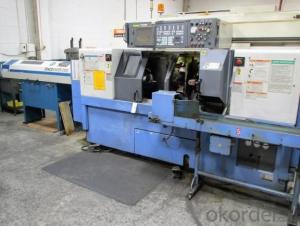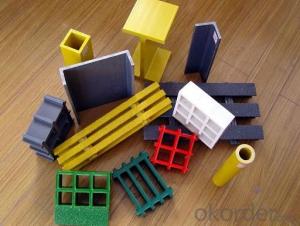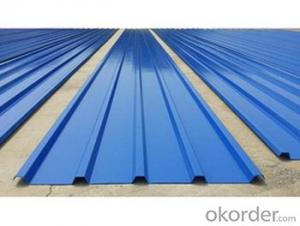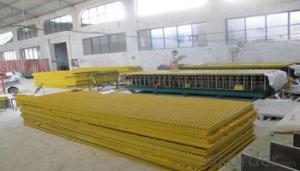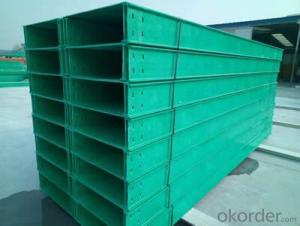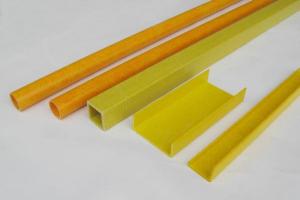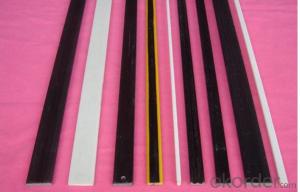FRP Pultrusion Profiles:FRP Pultruded Grating with Easy Maintenance and Best Quality on Hot Sales
- Loading Port:
- Tianjin
- Payment Terms:
- TT OR LC
- Min Order Qty:
- 4000 m.t.
- Supply Capability:
- 300000 m.t./month
OKorder Service Pledge
OKorder Financial Service
You Might Also Like
PRODUCT DESCRIPTION
Pultruded grating is made by a particular assembly process, which using “I” shape as its main load-bearing and special rod to go through the bearing bar. Pultruded grating include the standard grating and the custom grating, the custom grating can be designed to meet customer’s requirement or special using condition by changing the shape, size and space of the bearing bars, the surface can be covered with lozenge panel, grit panel, or added the anti-slippery sand directly.
FRP pultruded grating has the most characteristics of molded grating, but it has its distinct advantages, it has very high fiberglass content in the loading direction, so it has very high load capability, it has more superiority when used at wide span, so that the basic support will be decreased and the project cost will be reduced accordingly.
SPECIFICATION
Thickness (mm) | Bar width (mm) | Open space (mm) | Open rate (%) | Approx weight (kg/m |
25.4 | 15.2 | 22.8 | 60 | 13.2 |
25.4 | 15.2 | 15.2 | 50 | 15.9 |
25.4 | 15.2 | 10.1 | 40 | 18.5 |
25.4 | 40 | 10.8 | 21 | 14.5 |
38.1 | 15.2 | 22.8 | 60 | 15.8 |
38.1 | 15.2 | 15.2 | 50 | 19.1 |
38.1 | 15.2 | 10.1 | 40 | 22.4 |
50.8 | 25.4 | 25.4 | 50 | 16.6 |
50.8 | 25.4 | 12.7 | 33 | 21.1 |
CHOICE FOR PULTRUDED GRATING
Resin: GP resin, ISO resin, VE resin, Phenol resin
Color choice: Yellow, gray, green, custom color
Surface choice: Groove surface, grit surface, lozenge cover surface
FEATURES
a. Anti-corrosion and anti-rust
b. Light weight and high strength
c. Anti-flammable
d. Anti- fatigue
e. Safe and anti-slippery
f. Anti-ageing
g. Easy of maintenance
h. Excellent electromagnetism property
i. Good economic benefit
FIELDS SERVED
Sewage treatment,
water supply and drainage,
chemical industry,
oil industry,
power engineering,
pulp and paper,
construction engineering,
spinning, marine engineering.
APPLICATION
Operation terrace,
stair walkway,
ground floor,
trench cover,
sidewalk,
foot bridge,
equipment safety fence,
scaffold.
COMPANT DESCRIPTION
CNBM,China National Building Materials Group is a state-owned enterprise in charge of administrative affairs in china building materials industry. Established in 1984, CNBM is a large group corporation of building materials with total assets of 25 billion RMB and a total staff of 30,000.CNBM now owns 200 subordinating firms of solely owned and joint-venture companies.
CNBM International Corporation is one subsidiary of CNBM, we focus on offering good-quality products,professional service and complete solution to our customers. Strong delivery capacity, advanced technology& management, strong financing capability and excellent after-sale service are our advantages in sharing international market.
FAQ
1.Q:Are you factory or trading company ?
A:We are Factory produce FRP machines and FRP products.
2.Q:If can customized by customers requirements?
A:yes,we can produce the machine with customized size.
3.Q:How about the payment?
A:We accept any kind of payment.
4.Q:What is the guarantee?
A:Gurantee is one year.
PICTURES
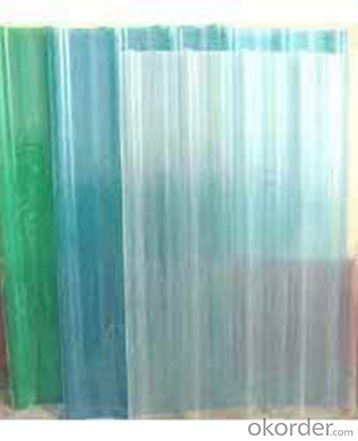
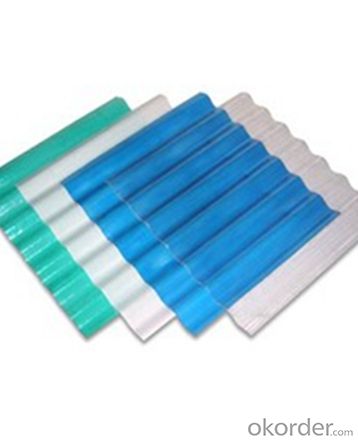
- Q: What are the different types of FRP pultrusion profiles available?
- A variety of FRP pultrusion profiles are available to meet specific application requirements and performance criteria. These profiles include: 1. Standard shapes: These profiles are widely used in various industries and applications. They come in different sizes and shapes, such as round tubes, square tubes, rectangular tubes, and angles. Standard shapes offer versatility and are suitable for both structural and non-structural applications. 2. Custom profiles: These profiles are tailored to customer specifications. They offer flexibility in terms of shape, dimensions, and reinforcement options. Custom profiles are ideal for unique or specialized applications where standard shapes may not suffice. 3. Structural profiles: These profiles are designed for high strength and stiffness. They are commonly used in load-bearing applications, including beams, columns, and trusses. Structural profiles are reinforced with additional fibers to enhance their load-bearing capacity. 4. Electrical profiles: These profiles possess excellent electrical insulation properties. They find application in electrical and electronics applications such as cable trays, busbars, and insulating supports. Electrical profiles offer high dielectric strength and resistivity. 5. Environmental profiles: These profiles are formulated to withstand harsh environmental conditions, including extreme temperatures, UV radiation, and chemical exposure. They are commonly used in outdoor applications like structural supports, handrails, and grating systems. Environmental profiles offer long-term durability and resistance to degradation. 6. Fire-retardant profiles: These profiles are designed to have improved fire resistance properties. They are commonly used in applications where fire safety is crucial, such as building construction, transportation, and aerospace. Fire-retardant profiles incorporate additives that inhibit flame spread and reduce smoke generation. It is important to note that these are just a few examples of the FRP pultrusion profiles available. Depending on specific industry requirements, there may be other specialized profiles. The selection of the appropriate profile depends on factors such as the intended application, load requirements, environmental conditions, and regulatory standards.
- Q: Are FRP pultrusion profiles resistant to mold and mildew?
- Yes, FRP pultrusion profiles are highly resistant to mold and mildew. The non-porous nature of the fiberglass reinforcement and the synthetic resin matrix used in pultrusion manufacturing make these profiles highly resistant to moisture absorption, preventing the growth of mold and mildew.
- Q: Can FRP pultrusion profiles be used in chemical storage tanks?
- Yes, FRP pultrusion profiles can be used in chemical storage tanks. FRP (Fiber Reinforced Plastic) materials are known for their excellent corrosion resistance and durability, making them an ideal choice for storing various chemicals. The pultrusion process further enhances the strength and structural integrity of the profiles, making them suitable for demanding applications like chemical storage tanks.
- Q: What is the compression strength of FRP pultrusion profiles?
- The compression strength of FRP (Fiber Reinforced Polymer) pultrusion profiles varies depending on several factors such as the type of resin, fiber orientation, and design. However, on average, FRP pultrusion profiles have a compression strength ranging from 10,000 to 50,000 pounds per square inch (psi). It is important to note that these values are approximate and may vary depending on the specific application and intended use of the FRP profiles. Additionally, manufacturers typically provide technical data sheets that outline the compression strength and other mechanical properties of their FRP pultrusion products, which can be utilized for more accurate and reliable information.
- Q: What is the tensile strength of FRP pultrusion profiles?
- The tensile strength of FRP (Fiber Reinforced Polymer) pultrusion profiles can vary depending on the specific type and composition of the materials used. Generally, FRP pultrusion profiles have high tensile strength, often exceeding that of traditional construction materials such as steel or aluminum. A typical tensile strength range for FRP pultrusion profiles can be anywhere from 300 MPa (megapascals) to 1500 MPa or higher. However, it is important to note that the tensile strength can be customized and engineered to meet specific project requirements by adjusting the reinforcement materials, fiber orientation, resin matrix, and manufacturing process. Therefore, it is advisable to consult with the manufacturer or supplier to obtain accurate and specific information regarding the tensile strength of a particular FRP pultrusion profile.
- Q: Are FRP pultrusion profiles suitable for the manufacturing of chemical pumps?
- Yes, FRP pultrusion profiles are suitable for the manufacturing of chemical pumps. FRP (Fiber Reinforced Polymer) pultrusion profiles offer several advantages that make them ideal for use in chemical pump manufacturing. Firstly, FRP pultrusion profiles are highly corrosion-resistant. Chemical pumps are frequently exposed to corrosive chemicals, which can cause damage and deterioration to traditional metal pump components. However, FRP pultrusion profiles are made from a combination of fiber reinforcements and a polymer resin matrix, which makes them highly resistant to corrosion from various chemicals. This makes FRP pultrusion profiles an excellent choice for ensuring the longevity and durability of chemical pumps. Secondly, FRP pultrusion profiles have excellent mechanical properties. They have a high strength-to-weight ratio, which means they can withstand high pressures and loads without adding significant weight to the pump. This is important for chemical pumps that need to handle heavy-duty applications and maintain their performance over time. Additionally, FRP pultrusion profiles offer design flexibility. They can be manufactured in various shapes and sizes, allowing for customized designs that meet specific pump requirements. This versatility in design enables manufacturers to optimize the pump performance and efficiency. Moreover, FRP pultrusion profiles are electrically non-conductive. This is particularly advantageous in chemical pump applications, where the presence of electricity can pose a safety risk. By using FRP pultrusion profiles, the risk of electrical accidents is minimized, ensuring a safer working environment. In summary, FRP pultrusion profiles are well-suited for the manufacturing of chemical pumps. Their corrosion resistance, excellent mechanical properties, design flexibility, and electrical non-conductivity make them a reliable and efficient choice for ensuring the performance, durability, and safety of chemical pumps in various industrial applications.
- Q: Are FRP pultrusion profiles resistant to caustic solutions?
- Yes, FRP pultrusion profiles are generally highly resistant to caustic solutions. The inherent chemical resistance of fiberglass-reinforced plastic (FRP) combined with the corrosion-resistant properties of the pultrusion manufacturing process make FRP pultrusion profiles an excellent choice for applications involving caustic solutions.
- Q: Can FRP pultrusion profiles be used in renewable energy projects?
- Certainly, FRP pultrusion profiles are capable of being used in renewable energy projects. They possess a wide range of advantages that make them suitable for various applications within the renewable energy sector. To begin with, FRP pultrusion profiles are both lightweight and strong, which makes them ideal for utilization in wind turbine blades. The lightweight nature of FRP materials allows for increased efficiency in wind energy generation by reducing the load on the turbine, thus enhancing overall performance. Furthermore, the high strength-to-weight ratio of FRP profiles ensures durability and longevity, even in severe environmental conditions. Additionally, FRP pultrusion profiles display exceptional resistance to corrosion, which renders them suitable for employment in solar panel mounting structures and other components exposed to moisture and outdoor elements. This corrosion resistance ensures that FRP profiles maintain their structural integrity and performance over an extended period, diminishing the need for frequent maintenance and replacement. Furthermore, FRP pultrusion profiles can be customized to meet specific project requirements, providing flexibility in design and functionality. They can be easily molded into complex shapes and sizes, facilitating the creation of innovative and efficient solutions for renewable energy projects. Moreover, FRP materials are non-conductive and possess excellent electrical insulation properties, making them suitable for use in electrical enclosures and support structures for renewable energy systems such as solar power plants. In conclusion, FRP pultrusion profiles can be effectively utilized in renewable energy projects due to their lightweight, strong, corrosion-resistant, customizable, and electrically-insulating properties. These characteristics make FRP profiles a reliable and sustainable choice for various applications within the renewable energy sector.
- Q: What are the main uses of pultruded glass fiber reinforced plastic extrusions?
- The village shopping malls, livestock pens, Birdhouse wall gate, greenhouse structure, supporting member, rattan shelf, water tank etc.. The countryside is a potential big shopping mall, but the factors of bidding restrict its development.
- Q: Do FRP pultrusion profiles have any limitations or drawbacks?
- Yes, FRP pultrusion profiles do have certain limitations and drawbacks. One limitation is that FRP pultrusion profiles have lower stiffness compared to traditional materials like steel or aluminum. This means that they may not be suitable for applications that require high structural rigidity or heavy loads. Another limitation is that FRP pultrusion profiles are prone to creep, which is the gradual deformation of the material under a constant load over time. This can negatively affect the long-term performance and durability of the profiles, especially in applications where they are subjected to sustained stress. Additionally, FRP pultrusion profiles are generally more expensive to produce compared to traditional materials. The manufacturing process involves pultruding continuous fibers through a resin matrix, which requires specialized equipment and expertise. This can result in higher production costs, making FRP pultrusion profiles less cost-effective for certain applications. Furthermore, FRP pultrusion profiles are generally not suitable for high-temperature applications. The resin matrix used in their production can degrade or soften at elevated temperatures, limiting their use in environments where thermal resistance is critical. Lastly, FRP pultrusion profiles may have limited design flexibility compared to other materials. The pultrusion process typically produces profiles with constant cross-sections and limited geometric complexity. This can restrict their use in applications that require intricate shapes or customized designs. Despite these limitations and drawbacks, FRP pultrusion profiles offer several advantages such as high strength-to-weight ratio, corrosion resistance, and electrical insulation properties. It is important to carefully consider the specific requirements of the application before opting for FRP pultrusion profiles.
Send your message to us
FRP Pultrusion Profiles:FRP Pultruded Grating with Easy Maintenance and Best Quality on Hot Sales
- Loading Port:
- Tianjin
- Payment Terms:
- TT OR LC
- Min Order Qty:
- 4000 m.t.
- Supply Capability:
- 300000 m.t./month
OKorder Service Pledge
OKorder Financial Service
Similar products
Hot products
Hot Searches
Related keywords
